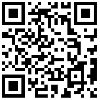In today's digital era, the transition from paper to pixels has become an essential process. Not only does it streamline storage, but it also enhances accessibility and sharing. But how exactly does a tangible document become an electronic file? Let's delve into the step-by-step transformation.
Scanners stand as the workhorses in converting paper documents into their electronic counterparts. With a myriad of scanner options on the market, ranging from professional-grade to user-friendly home devices, these tools can transform stacks of paper into high-quality PDFs or JPEGs with ease.
Here’s a quick guide to scanning: Place your document on the scanner bed, fire up the scanning software, choose your desired file format (PDF or JPEG), hit the "Scan" button, and voil? , you’re just moments away from editing, saving, or sharing your newly digitized file.
As smartphones and tablets have proliferated, a host of mobile scanning apps have popped up. These apps often boast intuitive interfaces, making document digitization a snap. To scan on-the-go, simply download and launch an app like "Universal Scanning King", aim your camera at the document, adjust the angle to ensure clarity, tap the "Capture" button, and presto—your document is now digital and ready for editing, saving, or sharing.
Enter OCR (Optical Character Recognition) technology, which translates scanned images into editable text using specialized software. While no OCR system is perfect, many offer impressive accuracy for common uses. Here’s how to wield OCR: First, digitize your paper using either a scanner or a mobile scanning app. Next, open your OCR software of choice, such as ABBYY FineReader or Adobe Acrobat, import your image, and let the software work its magic by identifying and converting the text. Give it a once-over for any typos, save or share your electronic document, and you're all set.
For the best results, ensure that your paper documents are crisp and clean before conversion. When employing OCR, opt for high-res images, keep your pages flat to minimize shadows or distortion during scanning or shooting, and be prepared to manually correct any unique fonts or handwritten bits that may stump the software. And when it's time to share your digital documents, make sure the file format and content comply with privacy and copyright regulations.



